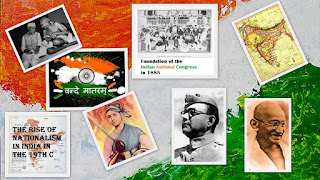 |
| India's freedom struggle. www.google.com |
 |
| Jallianwalla Bagh massacre 1913 India's freedom struggle. www.google.com |
 |
| India's freedom struggle. www.google.com |
 |
| a distinguished patriot. Subbash Chandra Bose. indiatvnews.com |
 |
| bulldog like British cop, shutterstock.com |
 |
| Midnapore, WB location map. paschimmedinipur.gov.in |
The activists got a third chance. Taking advantage of a big playground close to Peddy's Bungalow, two of the comrades decided to go after him for the 'final kill'. He was surrounded by teachers. The advantage was the interior was poorly-lit, perhaps there was no power supply. A good chance was on the silver platter, a chance to escape undetected in the dim light. Around 5 pm on 8th May 1931, two courageous youngsters posing as helping the Collector went close to him, whipped out the gun and fired at him in close range. Severely injured, Peddy died following day in the hospital. For the patriotic people, it was a great relief something like slaying a notorious Asura (demon), an occasion to rejoice. Both Jyoti and Vimal came out of the scene of crime secretly and safely without raising suspicion. This murder took place after Salt Satyagraha by the Congress had taken place and gained wide publicity across India and abroad. The British Raj levied tax on the cooking salt, an important item in cooking and there were wide spread protests across India. Gandhiji undertook salt Yatra to Dandi in Gujarat and broke the law by collecting salt on 6 April 1930 and later Sri C. Rajagopala Chari (Rajaji) went on a padayatra from Tiruchirapalli city, Tamil Nadu to Vedaranyam in Nagapatnam district and collected salt on 28 April, 1930 along with Kamaraj Nadar, T.S.S. Rajan, Kakkan and Sardar Vedaratnam Pillai.
Soon a spate of violence took place in Midnapur district and countless British officials were scared and not happy to work in a place ridden with violent nationalists. The killing of D. E. Burge and Robert Douglas, both I.C.S. officers added a new dimension to the British administrative machinery. They tightened the security and, however, they had begun to realize that India's freedom from the British yoke was not that far off.









